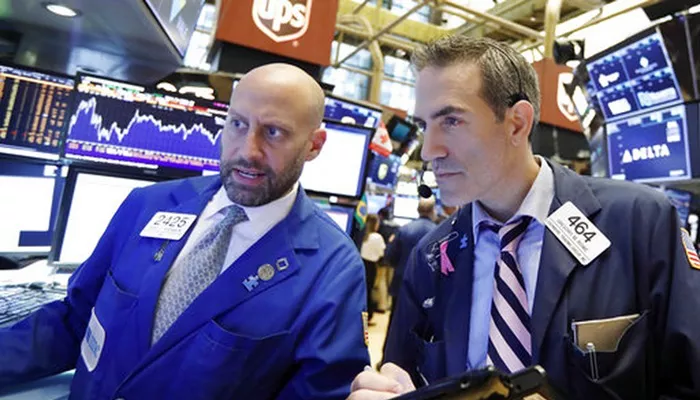As of 2025, Gallup reports that 62% of Americans own stocks, a figure consistent with the previous year’s data from 2024 and a slight increase from 2023, which was 61%. This marks a notable rebound compared to the years following the 2008 financial crisis, during which stock ownership consistently remained below this percentage from 2010 to 2022. In fact, there was a decline in stock ownership in the aftermath of the financial crisis, with ownership dropping as low as 52% in 2013 and 2016, only to rise above 60% again in 2023.
Gallup tracks U.S. consumer stock ownership through an annual survey conducted as part of its Economic and Personal Finance Survey, typically held in April. This survey collects data on whether respondents own individual stocks, stocks in mutual funds, or stocks in retirement savings accounts such as 401(k)s or IRAs.
Trends in Stock Ownership Over Time
Historically, the percentage of Americans who own stocks has fluctuated based on broader economic conditions. Between 2001 and 2007, the stock ownership rate averaged 62%, but this number dropped below 60% after the financial crisis of 2008, a period during which many Americans saw the value of their investments fall sharply. The crisis caused widespread economic uncertainty, leading to reduced consumer confidence and fewer people investing in the stock market.
However, in recent years, the trend has been upward, with stock ownership reaching its highest point in over a decade. In 2023, stock ownership climbed above 60% once again, reflecting a steady recovery in both the financial markets and broader consumer confidence. This indicates that more Americans are once again turning to the stock market as a means of growing their wealth, possibly due to a stronger economy and the continued success of technology-driven financial tools that make investing more accessible.
Demographic Factors Influencing Stock Ownership
Gallup’s findings consistently show that stock ownership is strongly influenced by several demographic factors, such as household income, education, age, marital status, and race/ethnicity. In its latest analysis, Gallup reveals the following trends:
Household Income: Americans with higher household incomes are more likely to own stocks. For instance, 87% of households with incomes of $100,000 or more report owning stocks, significantly higher than the 28% of households with incomes below $50,000 who own stocks. This disparity reflects the fact that wealthier households are more likely to have the financial resources to invest in the stock market, whether through employer-sponsored retirement plans or individual investment accounts.
Education Level: College graduates are also significantly more likely to own stocks. Approximately 84% of college-educated adults own stocks, compared to only 42% of individuals with a high school diploma or less. This gap may be attributed to higher levels of financial literacy and the financial security that typically accompanies higher educational attainment.
Marital Status: Married adults report higher levels of stock ownership compared to unmarried adults. About 77% of married adults own stocks, compared to just 49% of unmarried adults. This may reflect the financial stability and shared resources of married couples, which can make it easier to invest in the stock market.
Race/Ethnicity: There are notable racial and ethnic disparities in stock ownership in the U.S. White adults are the most likely to own stocks, with 70% reporting stock ownership. In contrast, only 53% of Black adults and 38% of Hispanic adults own stocks. These differences are reflective of broader wealth gaps and economic inequalities that exist between racial and ethnic groups, as well as disparities in access to financial education and investment opportunities.
Gender and Political Affiliation
Interestingly, Gallup finds no significant differences in stock ownership based on gender or political affiliation. Whether male or female, or regardless of political party affiliation, the stock ownership rates reported by these groups are close to the national average of 62%. This suggests that the ability to invest in stocks is not significantly influenced by gender or political beliefs, but rather by other socio-economic factors.
Broader Implications of Stock Ownership
The rising rate of stock ownership in the U.S. signals a broader trend towards greater financial participation and awareness among the public. As more Americans become involved in the stock market, they may be able to build wealth over time, especially as the stock market continues to recover and grow. However, this increased participation also raises important questions about the accessibility and inclusivity of the stock market. As noted, higher-income, more educated, and married individuals are more likely to own stocks, while minority groups and those with lower incomes have less access to these investment opportunities.
The disparities in stock ownership by race and income highlight the need for increased financial education and resources to ensure that all Americans, regardless of background, can participate in wealth-building opportunities. Policies and initiatives that promote financial literacy, provide access to low-cost investment platforms, and address economic inequality could help close the gap and provide more individuals with the tools they need to invest and grow their wealth in the stock market.
Conclusion
In conclusion, 62% of Americans currently own stocks, with trends indicating that the stock market is becoming more accessible to a larger portion of the population. However, there are still significant socio-economic and racial disparities that affect who is most likely to invest. While stock ownership has increased in recent years, the challenge remains to make investing accessible and beneficial for all Americans, regardless of income, education, or ethnicity.
As the economy continues to evolve, it will be interesting to see whether these trends persist or change, and how broader economic and political factors influence Americans’ participation in the stock market. For now, though, the upward trend in stock ownership suggests that more Americans are engaging in the stock market as a key component of their financial future.
Related Topics:

